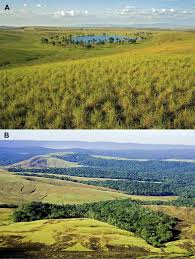Palaeofires:

Scientists have traced evidence of palaeofires (ancient wildfires) from the Permian Period (~250 million years ago) in the Godavari Basin.
- The team successfully distinguished between in situ (on-site) and ex situ (transported) charcoal, helping resolve a long-standing debate in geology regarding the origin of charcoal found in coal-bearing formations.
- Stratigraphic patterns (rock layering) revealed that:
- During regressive phases (sea-level drop), well-preserved, concentrated fire residues were found.
- During transgressive phases (sea-level rise), charcoal was more oxidised and dispersed, indicating environmental mixing and transport.
- High atmospheric oxygen levels in the Permian Period likely made the Earth more fire-prone, intensifying wildfire frequency and scale.
- The Raniganj Coalfield was one of the earliest Indian sites where macroscopic charcoal in coal seams suggested the presence of palaeofires in ancient peat-forming environments (palaeomires).
- These findings help understand how wildfires influence carbon cycling and long-term carbon sequestration—important for modern climate change mitigation strategies.
- Palaeofires refer to wildfire events preserved in geological records, which play a crucial role in understanding Earth’s past vegetation, climate evolution, and coal formation.
- The study spanned geological periods from the Late Silurian (443.8–419.2 million years ago) to the Quaternary (from 2.58 million years ago to present), highlighting how wildfires have historically shaped landscapes, vegetation patterns, and coal formation.
- The research combined advanced techniques like Palynofacies analysis, Raman Spectroscopy, Rock-Eval Pyrolysis, and FTIR Spectroscopy to examine microscopic organic matter and fossil charcoal in ancient sedimentary rocks.




